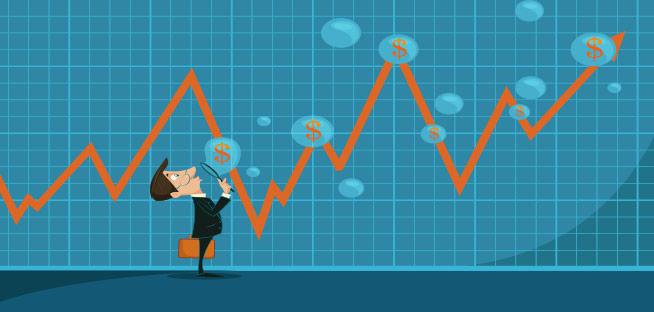
Depending on your point of view, the unembellished rise of the Stock Market throughout 2013 is either a well deserved return to profitability, or it is a precursor to the mother of all stock market collapses. If your view is the latter, then right now is the pinnacle of a bubble that could eclipse the 2007/08 GFC (Global Financial Crisis) and rival that of the 1930’s Great Depression.
Bubbles are nothing new to the avid student of stock market history. Early in our professional careers we are introduced to major historical events such as Tulipmania in the 1600’s, the South Sea Company bubble in the early 1700’s, and more recently the 1920’s bubble that led to the Great Depression and the Dot-com bubble of the 1990’s.
There are always two points of view in any discussion (at least). In analytical circles, we refer to this as a two handed economists point of view. “On the one hand … but on the other hand!” With this in mind, I noted a few points of discussion to support both view points:
Bulls versus Bears

Why there isn’t a stock market bubble:
- S&P500 rolling 10-year returns – running below long-term average.
- Stock valuations – running below the average of prior market peaks
- Duration of current rally compared to previous bull markets. Only 1.8-years into current upcycle; average for bull market is 3.8-years
- S&P500 is expected to produce one of the best 5-year average annual results in 50-years
Why there is a stock market bubble:
- Signs of an asset bubble – when stock prices rise so sharply and at such a sustained rate that they exceed valuations justified by fundamentals, making a sudden collapse likely.
- Asset valuations are being artificially inflated by the Fed’s QE (Quantitative Easing) and Zero Interest Rate policy.
- Growth rates for consumption, inflation, wages, and S&P500 revenues are the lowest in 50-years
- This pace of stock market growth is unsustainable, and a reversion to the mean over the next few years is highly probable.
As a professional analyst and trader, I must operate on the cautious side of the coin for my clients. But for me, the disparity between the fundamental/economic analysis and price activity of the US stock market does just not add up.
Retail Investors have flocked to the stock market over the last two years, purely looking for yield returns. The safety of the Bond market no longer offers sufficient low risk return for the increasing Baby Boomer age group to survive on after retirement. Maybe this is the reason why the Federal Reserve is so adamant in propping up a false economy?
Matthew Brown – US Stocks & Options specialist
US Equity & Option Client Advisor
Halifax Investment Services
ASIC Australian Financial Services License Number – 225973
If you would like to learn more about the strategies you can use to profit from any type of market direction, visit https://australianinve.wpengine.com or you can contact Matthew on brown@halifaxonline.com.au
Matthew is an Authorised Representative of Halifax Investment Services (Halifax). Halifax provides broker services, including Full Service and Discount Services using multiple trading platforms. For Discount platform services, Halifax charges the same fees for phone service as the online trading platform.
